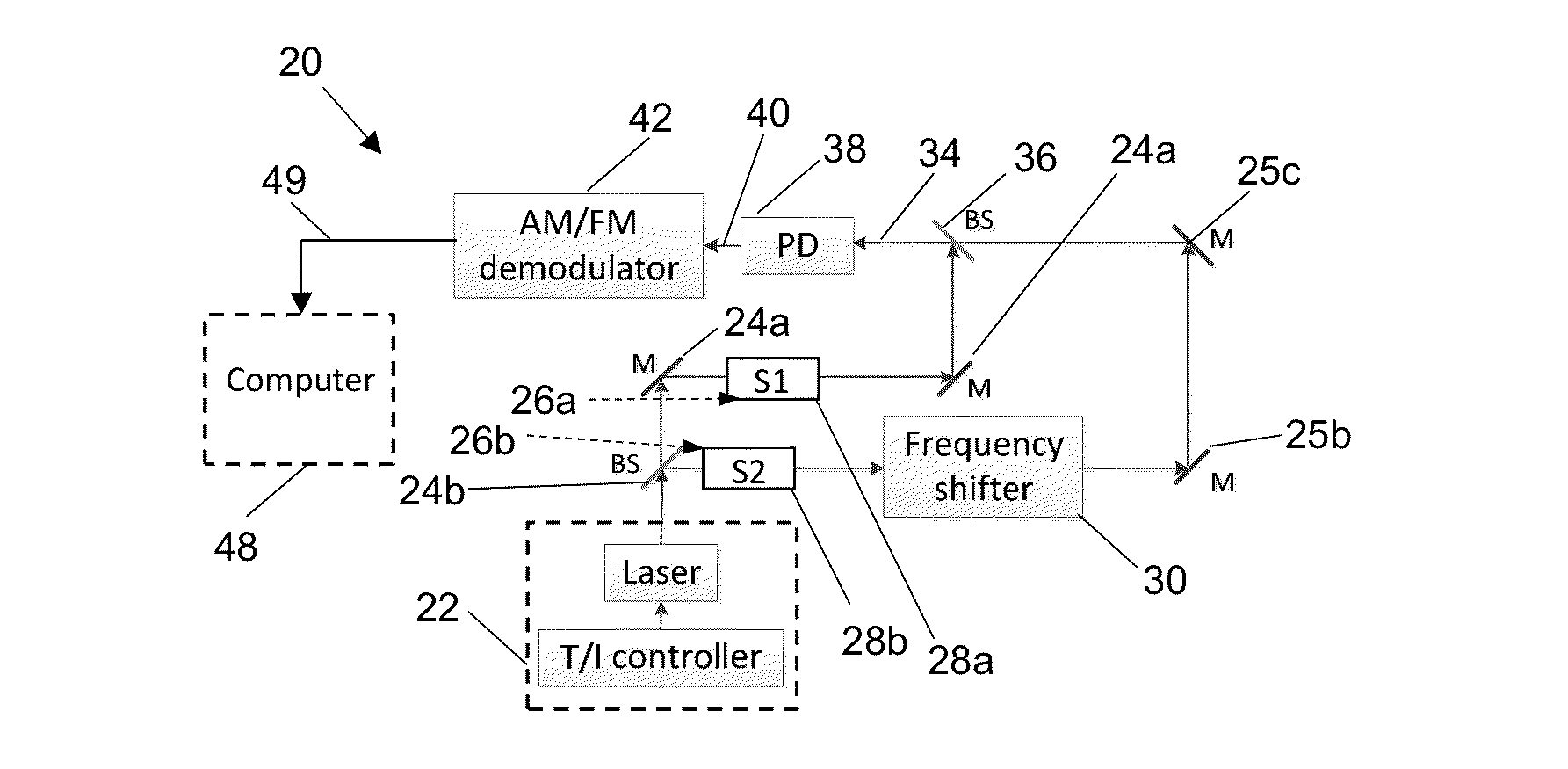Optical subtraction of molecular dispersion signals enabled by differential optical dispersion spectroscopy
a technology of optical dispersion and molecular dispersion signals, applied in the field ofdifferential optical dispersion, can solve the problems of affecting measurement, slow evacuation process, reducing reliability and long-term stability of setup,
- Summary
- Abstract
- Description
- Claims
- Application Information
AI Technical Summary
Benefits of technology
Problems solved by technology
Method used
Image
Examples
Embodiment Construction
[0017]Disclosed are a method and apparatus for the optical subtraction of molecular dispersion signals enabled by differential optical dispersion spectroscopy (DODiS). Using the method and apparatus disclosed herein, two samples can be measured simultaneously in exactly the same conditions and using only one optical detector which provides enough information to characterize concentrations of the samples in both optical paths. FIG. 1a is block diagram of an apparatus 20 configured for differential / comparative analysis of two gas samples. The system is coupled to a single frequency chirped laser source 22 configured to generate laser radiation having a fundamental frequency. In this example a distributed feedback (DFB) quantum cascade laser (QCL) and T / I (temperature / current) controller was used. It should be understood that other laser sources may be used without departing from the scope of this disclosure. The laser radiation is divided into two beams (two optical branches) using be...
PUM
| Property | Measurement | Unit |
|---|---|---|
| frequency | aaaaa | aaaaa |
| pressure | aaaaa | aaaaa |
| optical dispersion | aaaaa | aaaaa |
Abstract
Description
Claims
Application Information
 Login to View More
Login to View More - R&D
- Intellectual Property
- Life Sciences
- Materials
- Tech Scout
- Unparalleled Data Quality
- Higher Quality Content
- 60% Fewer Hallucinations
Browse by: Latest US Patents, China's latest patents, Technical Efficacy Thesaurus, Application Domain, Technology Topic, Popular Technical Reports.
© 2025 PatSnap. All rights reserved.Legal|Privacy policy|Modern Slavery Act Transparency Statement|Sitemap|About US| Contact US: help@patsnap.com



